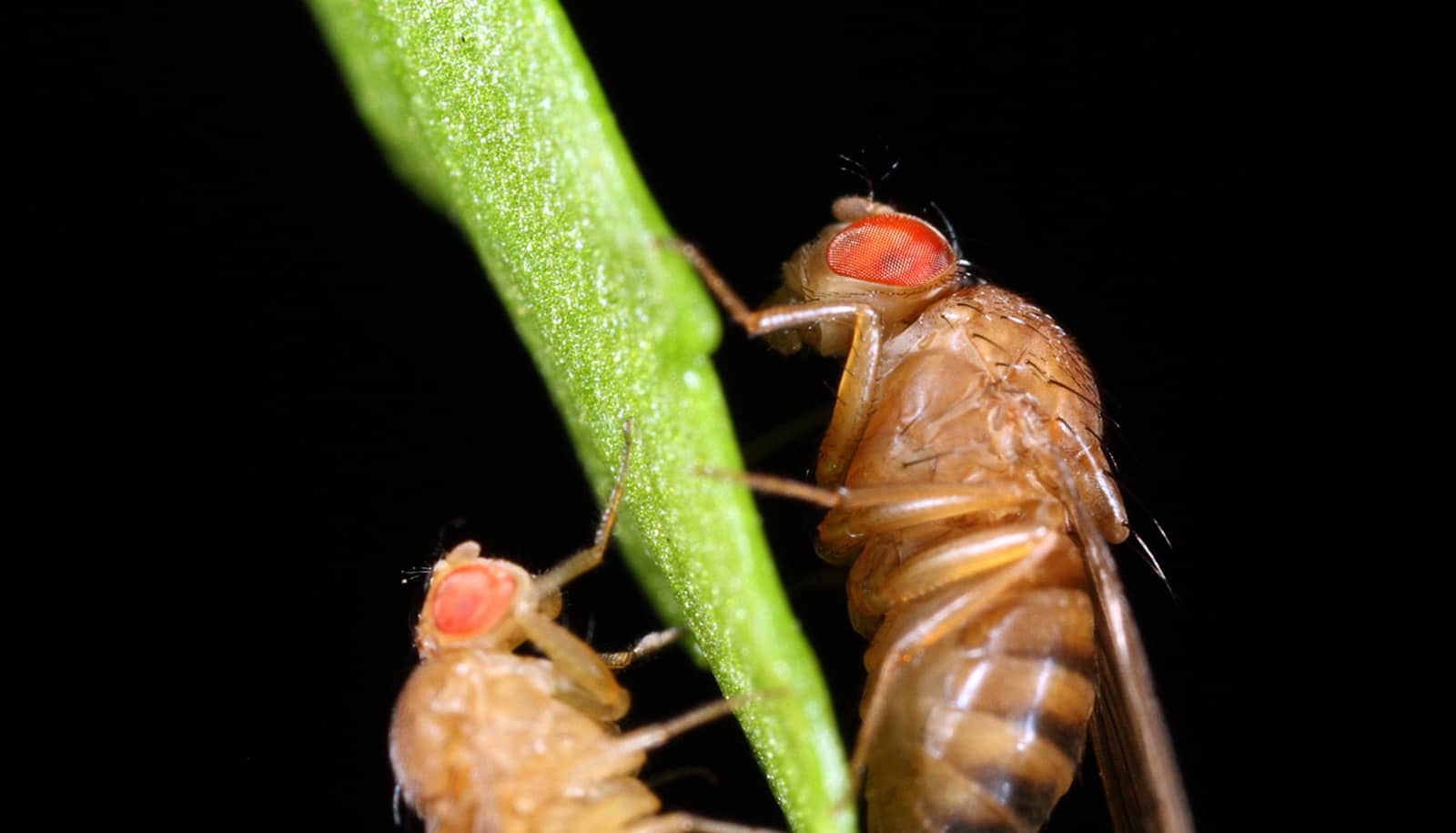A complex series of experiments shows that male fruit flies, when presented with a pair of females as potential mating partners, display a key component of rational choice: transitivity.
“Transitivity is a hallmark of rational decision-making,” says senior author Daniel Promislow, a professor of pathology and biology at the University of Washington. “Essentially, it is the process of establishing a rank order of preference, and then making behavioral decisions based on that hierarchy.”
Transitivity has been shown in other animals, such as some bird species, while searching for food. But Promislow’s team, led by first author and postdoctoral researcher Devin Arbuthnott, is among the first to see if rationality extends to mate choice.
The researchers showed that individual male fruit flies from one wild-derived strain, called Canton-S, displayed transitivity when presented with potential female mates from 10 different laboratory strains of fruit flies. In the tests, a researcher would place one Canton-S male in an arena with a pair of females, each from a different strain, and note if the male mated with either female.
“Before each test, we would mark each female with a yellow or red fluorescent powder,” says Arbuthnott, who is now a postdoctoral researcher at the University of British Columbia. “If the male attempted to mate with either female, we could determine the female’s identity based on her color.”

To account for all possible pairings of females from the 10 strains, they tested Canton-S males against 45 pairs of females. No fly, male or female, was tested more than once. After repeating these tests 10 to 20 times for each combination, the researchers discovered that Canton-S males displayed a consistent, ranked preference regarding which female to mate with.
“This is the pattern we would expect to see if males are making transitive decisions—a sign of rational choice,” Arbuthnott says.
How fruit flies pick a mate in just 15 minutes
Using the same assays, they showed that males from a second strain, Oregon-R, also display transitivity with females from the 10 laboratory strains. There were only a few small differences between the hierarchies displayed by Oregon-R males and Canton-S males.
Though the researchers only tested mate choice in male flies, the decision to mate in this species is definitely a two-way street. But Arbuthnott focused on male mate choice in these experiments to help dispel a misconception about mating in many animal species.
“There is a classic theory that females are the ‘choosy’ sex and males aren’t choosy,” Arbuthnott says. “We wanted to show that males are definitely making choices too when interacting with the females.”
The males are likely responding to a combination of visual, chemical and behavioral cues from the females. The team conducted more experiments to learn about the “information” males picked up from females. Blind males still displayed transitivity when choosing between females, as did mutant males who had no sense of taste and smell. But blind males with no sense of smell or taste did not display transitivity.
“The results from these sensory deprivation experiments indicate that there is some redundancy in the information provided by the female visual and chemical cues,” Promislow says.
Mating hierarchy
The researchers also analyzed one particular signal, a complex secretion of chemicals known as cuticular hydrocarbons, or CHCs.
“CHCs are essentially ‘contact pheromones,'” Arbuthnott says. “When they’re in close proximity, fruit flies can taste one another’s secretions and—we believe—learn information about a potential mate.”
By gas chromatography, which separates and identifies individual CHC molecules, they discovered that females from lines less likely to be chosen for mating secreted higher levels of two particular CHCs, which may act as “repellant” signals.
In addition, the researchers counted the number of offspring produced by females from each line, and discovered that males were more likely to mate with females with a greater capacity to produce the next generation.
Their results, published in Nature Communications, indicate that male fruit flies construct a hierarchy—a sign of transitivity and rational choice—and may be doing so by integrating diverse visual and chemical cues from females.
“They’re able to process the information they’re receiving in the most advantageous way,” Arbuthnott says. “Their decisions are transitive, which is indicative of rational choice.”
Tatyana Fedina and Scott Pletcher from the University of Michigan are coauthors of the study that was funded by the National Institutes of Health.
Source: University of Washington



